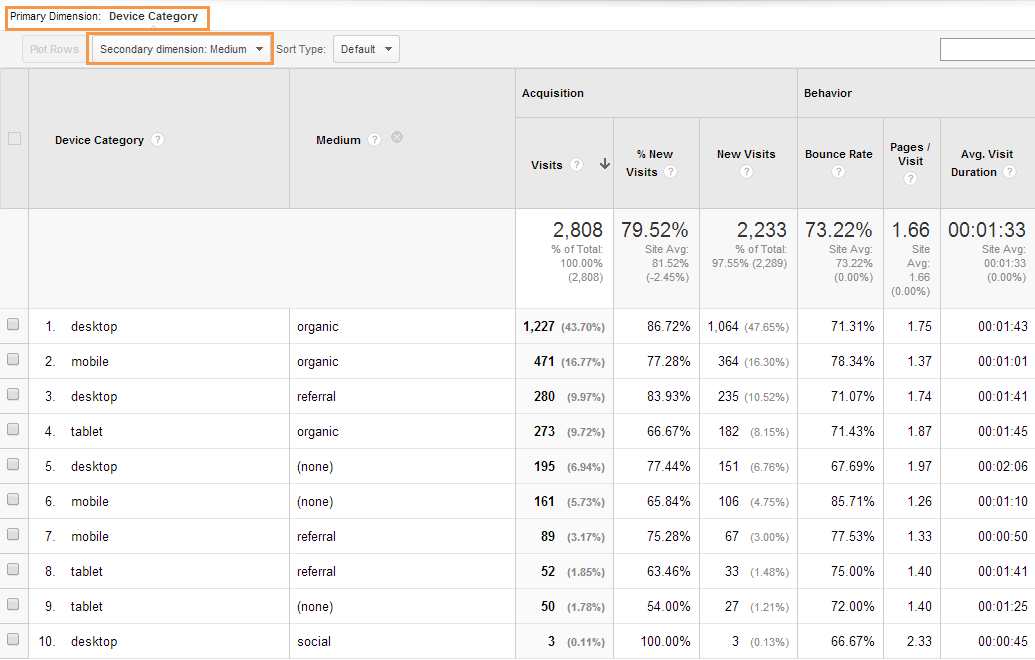The Power of Google Analytics Secondary Dimension: Optimizing Insights
The Power of Google Analytics Secondary Dimension: Optimizing Insights
Blog Article
Unlocking the Power of Secondary Measurement Analytics for Enhanced Information Insights and Decision-Making
In the realm of information analytics, key dimensions usually take the spotlight, but the true deepness of understandings lies within the world of second measurements. These added data points use a nuanced viewpoint that can illuminate connections and patterns not readily obvious initially look. By harnessing the power of secondary dimension analytics, organizations can reveal concealed patterns, discover connections, and remove extra purposeful verdicts from their information. The possibility for boosted decision-making through the application of these second measurements is substantial, assuring a much deeper understanding of intricate information sets and paving the way for more informed strategic choices.
Importance of Second Measurements
Exploring the significance of second measurements in analytics reveals the hidden layers of information understandings important for notified decision-making in various domain names. Additional dimensions give a much deeper understanding of main data by offering added context and point of views. By including additional dimensions right into analytics, organizations can remove much more detailed and nuanced insights from their datasets.
One trick significance of second dimensions is their capacity to section and categorize key data, enabling a much more thorough analysis of specific subsets within a dataset. When looking at the data as a whole, this division enables services to recognize patterns, trends, and outliers that could not be apparent. Additionally, second dimensions assist in revealing correlations and reliances in between various variables, leading to more exact projecting and predictive modeling.
Moreover, second dimensions play an important duty in improving information visualization and coverage. By adding second measurements to visualizations, such as graphes or charts, experts can develop more interesting and informative depictions of information, promoting better communication of searchings for to stakeholders. Overall, the integration of secondary dimensions in analytics is instrumental in unlocking the complete possibility of information and driving evidence-based decision-making.
Trick Advantages of Using Additional Dimensions
Making use of additional measurements in analytics uses organizations a critical advantage by boosting the depth and granularity of information insights. By dissecting information using additional dimensions such as time, place, device kind, or user demographics, companies can reveal patterns, patterns, and relationships that may or else stay surprise.
Additionally, the application of secondary dimensions enhances the context in which main information is analyzed. By leveraging second measurements in analytics, companies can harness the full potential of their data to drive better decision-making and accomplish their service purposes.
Advanced Information Evaluation Techniques
A deep study sophisticated information evaluation methods exposes advanced techniques for removing beneficial insights from complex datasets. One such strategy is artificial intelligence, where algorithms are employed to identify patterns within data, predict end results, and make data-driven choices. This approach permits for the automation of logical design building, enabling the processing of huge quantities of information at a quicker pace than Visit This Link traditional methods.
An additional innovative method is predictive analytics, which uses analytical formulas and device learning strategies to anticipate future results based on historic data. By evaluating trends and patterns, services can anticipate consumer habits, market trends, and possible dangers, encouraging them to make positive decisions.
In addition, text mining and sentiment evaluation are important techniques for removing important site insights from disorganized data resources such as social media sites comments, consumer evaluations, and study actions. By analyzing message data, companies can understand consumer opinions, recognize emerging fads, and enhance their solutions or products based upon feedback.
Enhancing Decision-Making Via Secondary Measurements

Enhancing decision-making via additional dimensions makes it possible for companies to make even more informed and targeted critical choices. As an example, by segmenting client information based on second measurements like purchasing history or involvement degrees, firms can tailor their advertising methods to details target market segments, resulting in enhanced conversion prices and consumer complete satisfaction. Second measurements can assist determine correlations and relationships between various variables, making it possible for companies to make data-driven decisions that drive growth and profitability.
Implementing Second Measurement Analytics
When incorporating second dimensions in analytics, companies can unlock much deeper insights that drive calculated decision-making and enhance total performance. This involves understanding the certain questions the company looks for to respond to and the information points called for to resolve them.

Moreover, companies should take advantage of progressed analytics tools and innovations to simplify the process of incorporating additional measurements. These tools can automate data processing, evaluation, and visualization, permitting companies to concentrate on translating understandings instead of manual data control.
Final Thought
In final thought, additional dimension analytics play an check my reference essential role in enhancing information understandings and decision-making procedures. By using advanced data evaluation strategies and carrying out additional dimensions effectively, companies can open the power of their data to drive tactical business choices.
In the world of data analytics, primary measurements commonly take the spotlight, but the real deepness of insights lies within the world of additional dimensions.Making use of additional dimensions in analytics offers companies a calculated advantage by boosting the depth and granularity of data understandings. By leveraging secondary measurements in analytics, organizations can harness the full possibility of their data to drive far better decision-making and accomplish their company objectives.
Carrying out data recognition processes and normal audits can assist maintain information quality and integrity.
By using innovative data evaluation methods and implementing additional dimensions successfully, organizations can unlock the power of their information to drive tactical business choices.
Report this page